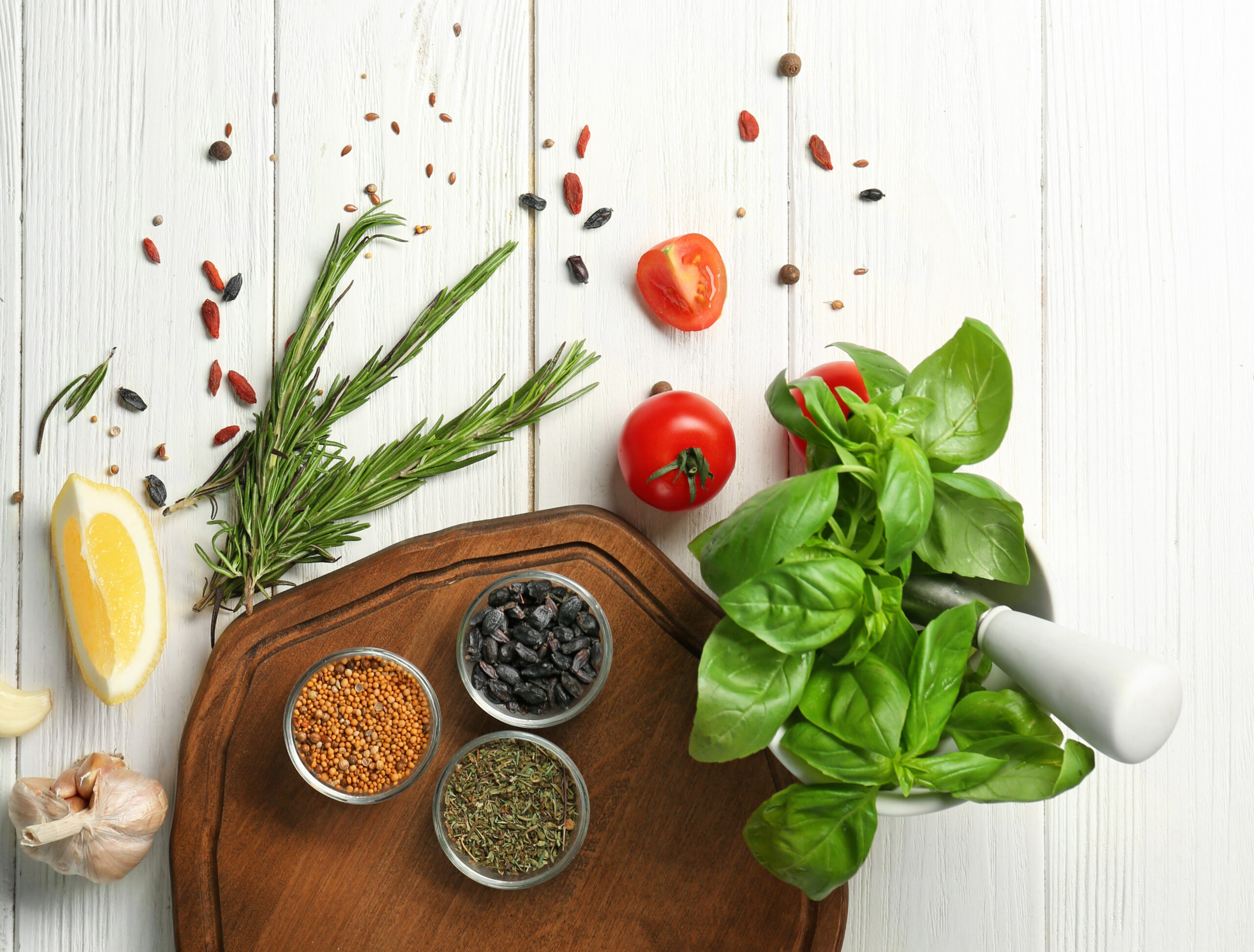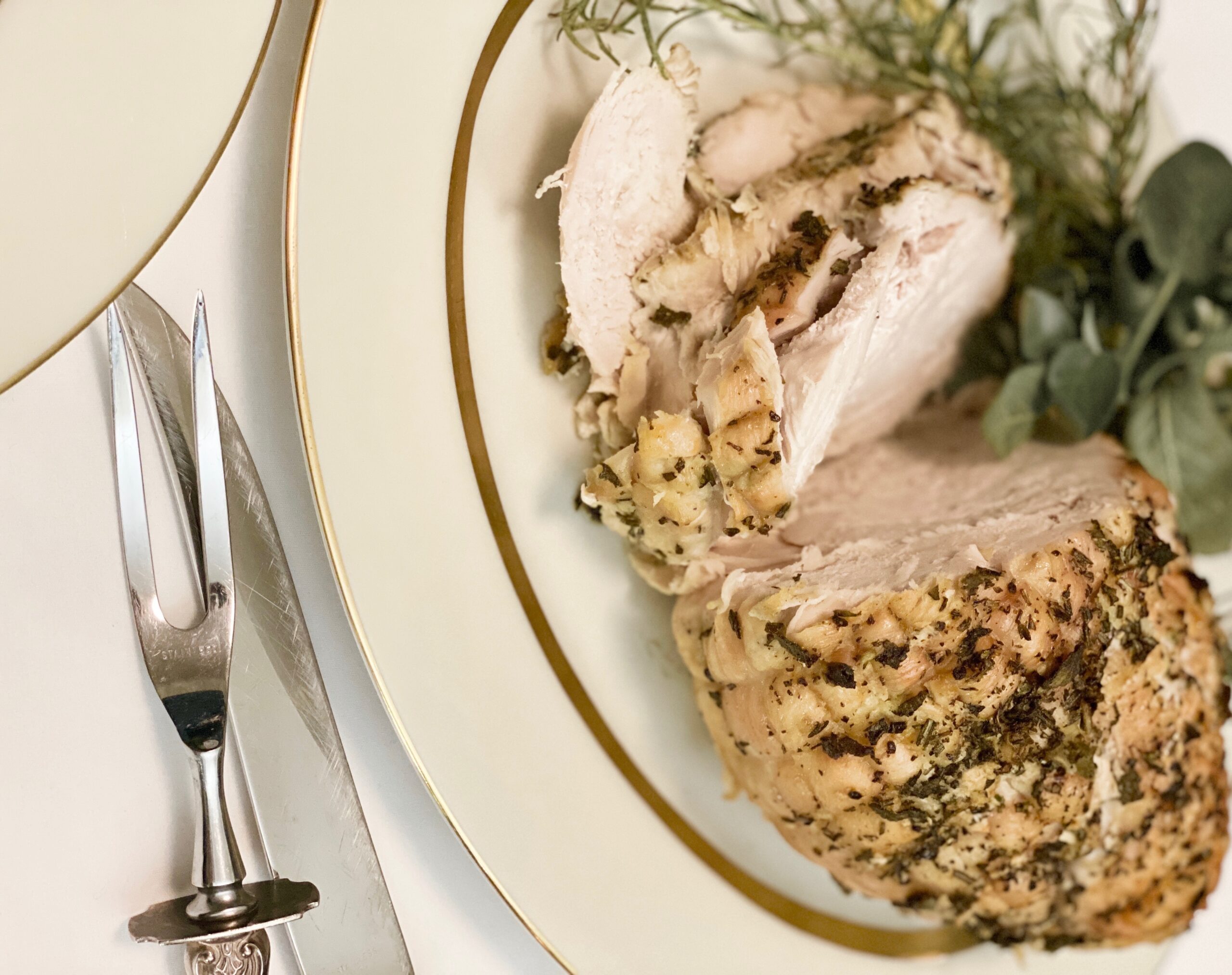
5 Herbs & Spices with Great Health Benefits
On May 1st we celebrated National Herb Day! Herbs and spices are widely used for medicinal and culinary purposes. Culinary herbs are used to add or enhance the flavors of foods but they also have many great health benefits. Speaking of health benefits, if you’re interested in improving your health, consider joining our MaxWell Care Program.
Herbs and spices as a group have antioxidant, anti-microbial, neuro-protective, and anti-inflammatory compounds. Herbs and spices can help with blood sugars, support liver detoxification, and improve digestion.
Polyphenols are micronutrients found in numerous plant derived foods including herbs and spices. In their dried forms, spices generally contain relatively high levels of polyphenols compared to other polyphenol rich foods. The predominant class/group of polyphenols in herbs and spices are the phenolic acids and flavonoids.
There is growing evidence that polyphenols in herbs and spices can provide health benefits through their action on the gut microbiota.
What is the difference between herbs and spices?
Herbs are the fresh leafy green part of the plant, common herbs include cilantro, basil, or oregano. Spices can come from the seeds, bark, or root of the plant for example cumin, turmeric, and cinnamon.
Both herbs and spices add flavor to the dish, however herbs are more subtle while spices have stronger flavor. Herbs can be used to season as well as garnish.
Herbs are best refrigerated or stored in water like cut flowers while spices are best preserved in glass bottles in your pantry.
What happens when you cook the herbs and spices?
Studies have shown that antioxidant capacity increases when microwaving, simmering, or sauteing as the heat liberates the antioxidant compounds. Dry heating methods like grilling, and frying decrease the antioxidant capacity.
Here are 5 herbs and spices you should incorporate to season your foods with health benefits:
1. Cumin – Native to the Mediterranean region and Egypt, cumin is a key ingredient used worldwide known for its aromatic effect. Cumin can be a nutty or smoky spice that is widely used in Indian cuisine.
Cumin seeds are nutritionally rich, they provide high amounts of fats and iron. Cumin has been shown to aid in digestion, have antidiabetic, anti-hypertensive, and anti-inflammatory effects.
2. Turmeric – The hype is real! Turmeric can be used in a variety of ways including to flavor and color curry powders, mustards, butters, cheeses.
Turmeric is a good source of curcumin, a yellow colored antioxidant that helps with inflammation and helps in fighting oxidative stress.
In a few studies turmeric has also been used as a potential therapeutic agent for various neurodegenerative diseases and as a protective agent for cardiovascular disease.
Try consuming it with black pepper for better absorption!
3. Cinnamon – A very popular spice with a distinctive taste and a sweet aroma, is great for sweet and savory dishes.
Recent studies in the United States National Library of Medicine showed that cinnamon is beneficial in treatment of diarrhea, emesis, muscle cramps, infections, molds, flu and erectile dysfunction.
Research also suggests that cinnamon may help lower blood sugar in individuals with diabetes. Clinical data indicates that cinnamon has a protective effect against metabolic syndrome by having positive effects in reducing blood pressure and ameliorating dyslipidemia, or abnormal levels of cholesterol.
The effective dose is typically 0.5-2 teaspoons of cinnamon per day, or 1-6 grams.
4. Rosemary – A perennial evergreen with blue flowers native to the Mediterranean. It is an aromatic and distinctive herb with a sweet, resinous flavor.
Rosemary can help prevent cell damage as it is rich in antioxidants and anti-inflammatory compounds. It contains carnosic acid, which can fight off damage by free radicals in the brain and support brain activity, specifically memory.
An active ingredient in rosemary, rosmarinic acid, has been shown to aid with allergic responses and nasal congestion as well.
5. Basil – A part of the mint family, with essential oils, flavonoids, and phenolic acids. Basil has shown anti-bacterial, antifungal and antioxidant activities.
Basil leaves have tremendous pharmaceutical benefits and have been used in treatment of fevers, coughs, flu, asthma, bronchitis, influenza and diarrhea.
One of its many benefits has been its anti-bacterial effects against food-borne pathogenic bacteria.
Now that you know some of the benefits of the five different herbs and spices, are you ready to use a few of them on a tasty and nutritious meal?!
Check out the recipe below, you won’t be disappointed!
Herbed Turkey Breast Roast

Ingredients:
• 4-6 lb boneless turkey breast roast
• 2 sprigs fresh sage
• 2 sprigs fresh rosemary
• 4 sprigs fresh thyme
• 2 Tbs olive oil
• Juice from 1 lemon
• Sea salt and pepper to taste
• 1-3 cups vegetable broth
Directions:
1. Preheat oven to 325 degrees.
2. Remove leaves of sage, rosemary, and thyme from stems. Finely chop leaves and discard stems.
3. Place turkey breast in roasting pan.
4. Brush roast with olive oil and lemon juice. Rub chopped herbs, salt, and pepper on skin of roast.
5. Pour vegetable broth in bottom of pan. Place lemon wedges in pan with turkey breast.
6. Roast the turkey breast for 1 hour and 45 minutes to 2 hours and 30 minutes until thermometer reads 165 degrees.
7. Remove from oven, cover pan with foil, and let stand for 10 minutes.
8. Slice and serve.
MaxWell Clinic nutrition blogs are produced for informational purposes only and brought to you by MaxWell Clinic, LLC. The information is provided by a Registered Dietitian Nutritionist that has been trained in providing dietary advice backed by nutritional science and research. The nutrition information is not to be construed as medical advice or medical nutrition therapy. The information is not to be used as individualized nutrition counseling or used to diagnose, cure, treat, or prevent any medical problems. The content of these blogs should not be used as a substitute for medical treatment from your medical provider. Any information, examples, recipes, foods, or stories presented do not constitute a warranty, guarantee, or prediction regarding the outcome of the individual using the material. The reader is responsible for working with a qualified professional before beginning any new dietary program or plan. The writers and publishers of this nutrition information are not responsible for any adverse reactions, effects, or consequences resulting from the use of provided information, recipes, foods, or suggestions.
